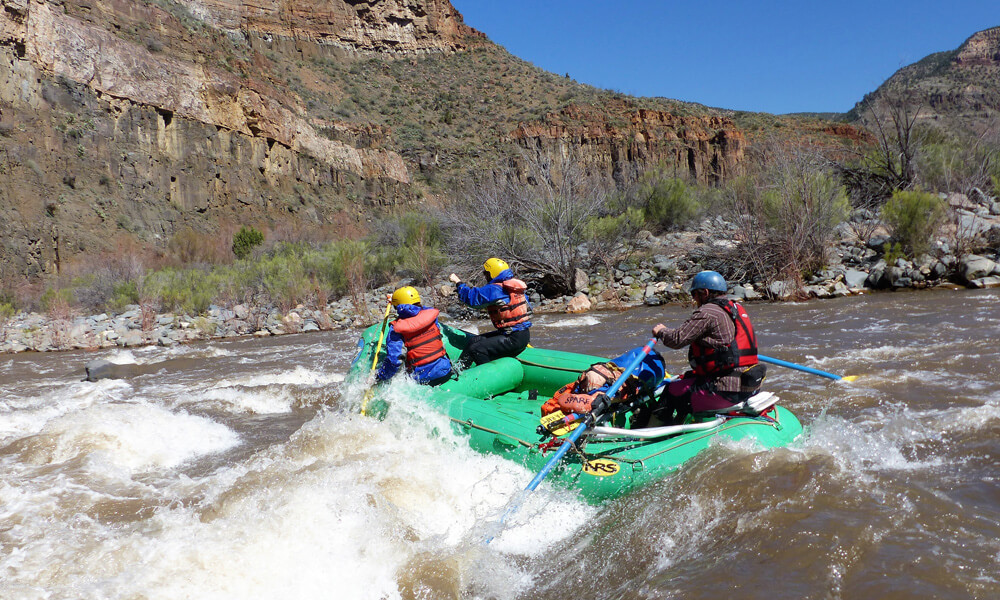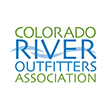The Various Types Of WhiteWater Craft
If you haven’t spent much time near a river, then you may only know of a few types of whitewater crafts that are available for whitewater rafting. Or you may only have seen certain ones in photos or in videos, but you shouldn’t be surprised to learn that there are quite a few different types. Just as with any other activity, there have been numerous innovations over the years to handle specific needs. We are going to touch on a few of the more common crafts found in rivers these days and why they are in use. Kayaks First we should mention the most well known of all white water rafting crafts, the Kayak. There are two types of Kayaks, Sea Kayaks and Whitewater Kayaks. Sea Kayaks are traditionally longer, less maneuverable, and handle better in water that is not flowing quickly. Whitewater Kayaks are better specialized to deal with water that is flowing up over and onto the deck. They are also shorter and more maneuverable, and stable in turbulent water. If either style of Kayak is flipped, they can be righted by means of an Eskimo Roll. Whitewater Kayaks are easier in this manner, as there is simply less boat to muscle. Rafts Rafts are by far the most common of all water crafts, they are what you normally see rafting companies use for whitewater rafting trips. They are significantly more stable than Kayaks, but equally less maneuverable. Rafts are inflatable, and made from high strength fabric coated with PVC, Urethane, and Neoprene. Most rafts are large enough to carry multiple passengers, though there are single person whitewater rafts available. Catarafts Catarafts are built from the same material as Rafts. Though specialty Catarafts can be made with a metal frame and are called Shredders. Typically, they are made from two inflatable pontoons on both sides of the craft and are bridged in the middle by a frame. In the middle, upon the fram, is where the seats are located and usually only hold a few passengers for whitewater rafting purposes. There is only one person rowing at a time, called the oarsman. The passengers are usually just along for the ride, having no real responsibilities. At times the oarsman will be guided by a spotter, but this is only when traversing difficult rapids and through areas where multiple obstructions persist. Catarafts can be any size, but generally they are smaller than rafts which helps to be more maneuverable. Canoes There are some people who prefer to keep it traditional upon a rafting vacation by using one of the oldest means to go rafting, the Canoe. Canoes were first created from tree trunks, but now a days they are made from fiberglass, Kevlar, and plastic. Spray covers can be added to keep water out from the hull, which then begins to resemble a Kayak, but generally they are left open. Often times, open Canoes have large airbags or foam pieces placed to the sides to help displace water in the boat when it becomes swamped. There are also holes towards the top rim of the Canoe, so if the raft does become swamped, the raft can be tipped towards one side to allow the water to escape. If a Canoe is rolled, it can be corrected just as a Kayak can, but it is quite a bit more difficult to accomplish. C1s C1s are very close in design to whitewater Kayaks, except rather than sitting as you do in a Kayak, in a C1 you kneel. The paddles used are also smaller, and only contain a single paddle rather than the double sided ones normally seen. They are a little shorter than Canoes, but a little longer than Kayaks. As you could assume, this means its more maneuverable than a Canoe, but less than a Kayak. McKenzie River Dory The McKenzie River Dory is a more traditional hard sided craft. It is generally wide with a flat bottom, flared sides, a narrow and flat bow, and pointed stern. This design allows the craft to spin about on its center which makes it extremely maneuverable. These crafts are used specifically for running rapids where maneuverability is paramount, where positioning is important when entering difficult and turbulent stretches. River Bugs River Bugs are by far the most minimalist of all whitewater crafts. They are essentially a glorified tire tube. The raft is shaped as a horseshoe, where the rafter is positioned in the middle with their feet pointed toward the open end. A mesh or plastic seat is provided in the middle to keep you in place, and an inflated back rest to lean against to avoid being struck by rocks. You paddle with your feet and hands which makes them less maneuverable than you might imagine. However, there really isn’t much steering required, you essentially hold on for the ride as your shot through the rivers torrents. If you intend to go on a salt river rafting or a Colorado river rafting trip, then you are going to want to familiarize yourself with the types of crafts available as they are not all the same, nor can they be handled the same. If you wanted to take an Arizona whitewater rafting or Colorado whitewater rafting trip that is planned by experienced tour guides. Then visit www.inaraft.com to see what options are available.
Rafting Tips For “Hucking Rubber”
Whether you are white water rafting Arizona or Colorado rafting, most people will never experience the thrill of cascading over a waterfall, and rightly so. It’s both an exhilarating and dangerous feat, one that tests your courage, skill, and faith in the raft. Now regardless if you are going over a 10 ft. or a 40 ft. drop, the process is going to be the same. What follows is going to be a step by step guide on what needs to be done prior to hucking that rubber and ensuring you land as safely as possible. Before we jump into it, it should be noted that unless you are prepared to take the fall, do not attempt to do so. If in the midst of it, you freeze up or generally act a fool, you are not only putting yourself in danger, but those around you as well. Tips For Hucking Rubber 1.) Stay Frosty: The very first thing that needs to be done prior to taking the fall, is to gather your wits and compose yourself. Feelings of panic and unpreparedness only brings about confusion and indecisiveness. Both of which should not be present while approaching the drop. You should be very clear and know exactly what is to be done every step of the way. Which in part, is what the remainder of our list will help you with. 2.) Prepare and Situate Body: The second step is to situate yourself in the raft in a preferable position. Regardless of where in the raft you are, you are going to want to lean backwards to give the rear of the raft more weight. This is so when you hit, the nose doesn’t dive into the water and eject everyone from the rear. Generally if you are in the front of the raft, you are going to want to be on your knees hugging the sides. There are ropes as well that line the outside of the raft which you should be holding onto as well. For those in the middle and towards the back of the raft, you want to sit on your rear and lean backwards and hold onto the ropes. Again, you want most of the weight to be directed towards the tail of the raft. 3.) Watch Your Surrounding: The third step is to consider whats going on around you. Try to look and see that everyone is situated and prepared, if you notice someone is not ready, they may not be able to stay in the raft. If this is the case, you want to brace yourself against being hit from that direction as well. People may not intend it, but when they are trying to avoid being tossed out the raft, they’ll grab at anything nearby. Which in many instances, you may be the one they are grabbing for. You should also be aware of other contents in the raft, and that they are properly secured as well. This goes for other peoples paddles too. It’s hard to remember in the midst of it that you have a paddle in one hand while the other grips the rope. But many times people will lose their paddle while trying to remain in the raft. This means there are going to be objects crashing around. Even if they can hold onto the paddle, there is still a chance that you can be struck by it. So just be aware not to catch one in the face, usually you will want to look away from where the rest of your party sits to avoid this from happening. 4.) Brace For Impact: The last step is to brace for impact, which all falls back on step 1, which was to stay frosty. As you are falling, you are going to want to lean back, hold onto the sides as well as your paddle, and prepare yourself for the unknown. You may land and everyone and everything is safe, in which case, let the celebrating begin. Though, at times while whitewater rafting, not everything goes as intended. If you land and you remain in the raft, make sure that everyone else has made it safely as well. If you notice that someone, or multiple people have been ejected, then begin to direct the raft towards them. If you have been ejected, then you will want to face down river and go nose to toes. After that, figure out where the raft is and the direction they will be coming in at. Hopefully if you’ve chosen to do some rubber hucking, you do it in a safe manner and enjoy it! You will be a part of an elite group, there are not many who have done such a thing. You will certainly have something to brag about. If you are interested in salt river rafting or even an expedition for Royal Gorge rafting, then take a peek at Colorado white water rafting trips offered through Wilderness Aware Rafting. They have many options for both amateurs and skilled rafters.
What To Do When You Are Ejected From A White Water Raft
For some, it will be an unnerving feeling being ejected from the safety and warmth of your raft, and plunging into the cold and unforgiving rapids of a Colorado River. Though hopefully, you will remember the steps that need to be taken in order to make your rescue easier. They are not difficult, but are critical in ensuring your safety. Most likely you will be wearing a helmet and life vest as those are going to be your best friends on the river. You dont want to go anywhere without them. What follows here is a step by step guide on how to react when thrown from a raft, and into the torrents of a white water river. Step 1: Stay Calm – A bad situation can only be made worse by letting your emotions get the better of you. If you find yourself in the water, it is going to be disorienting, loud, cold, and generally a terrifying thing if you are not used it. The best way it can be described is chaos… pure, unadulterated chaos. So if you are to follow the remainder of these steps, you must start at, and remain calm through till the end. Step 2: Orientation – After being ejected from a raft while white water rafting, the first thing you are going to want to do is orient yourself. Begin by facing downstream, if you notice an approaching embankment you have a chance to get to, try and swim towards it. You will also want to take note of the location of the raft as they are going to try and pull you back in. They are going to do this either by holding out a paddle for you to grab, or throwing you a rope. So knowing which direction they will be coming from helps. Step 3: Nose to Toes – After you gather your wits and orient yourself, you are going to want to face downstream and keep your toes and nose above the water. The reason for this is that you dont want to go down stream head first, as that implies if you were to hit a rock, it would be with your head first. You want your nose above water so you can breath. You want to keep your toes up for various reasons. One is that there are jagged and sharp rocks unseen to the eye under the water, you do not want to drag or hit your legs upon them. The second is that these rocks and other debris can snag you or your clothes and pull you under water. The third is that if you notice you are about to collide with a rock, your feet can soften the collision. Step 4: Ride and Wait – Once you’ve gathered your wits, oriented yourself, and succeeded in nose to toes, all thats left is to wait for an opportunity to arrive where you can either be saved by the raft, or make a break for shore or an embankment. If the Raft is within distance, be sure to watch for any attempts on their parts to either throw you a rope or reach out with a paddle. If you notice an area suitable for landing, do not try to roll your body and swim downstream. Rather, roll your body so you face upstream, and swim to the side you wish to go. This will slow you down ensuring you dont overshoot the spot, but also keeps your head from pointing down river. It may also be worthwhile to carry a whistle on your vest. Rivers are often loud, and if you manage to get ashore you do not want the raft to pass by you without knowing you made it as they will continue down, leaving you behind. The same can used if you get stuck or lodged in between rocks or trees and need to let them know as they approach. If you would care to go Salt River Rafting or on a White Water Raft Trip, please contact Wilderness Aware Rafting to see what trips are available.
The Necessary Equipment Needed When Venturing Into The Wild
If you are intending to make your way into the wild, be sure you are prepared. Whether you are taking a white water rafting trip, a 4×4 jeep tour, or are simply going horseback riding, there are certain items that you will be thankful to have if for some reason the circumstances turn against you. For example, if you went on a mountain bike trip and after traveling 30 or 40 miles into the wilderness, your tire goes flat and cannot be repaired. Or even if you get lost, and cannot find your way back to your car or camp before nightfall, you are not going to be too pleased to realize that in your backpack all you brought was a litre of water, your camera, sunscreen, and a few energy snacks. Normally this would suffice a less adventurous afternoon outing. But when the fun ride turns into a situation of survival, you will be very let down when you realize you do not have the necessary items which would make your position significantly easier. These core items are the same regardless of the activity you are engaged in. We will discuss these items, why they are important, and how you can have them on your person without adding to much weight to your load. Because these items should always be with you, no matter the outdoor activity. If you are in the wild for any reason, it is better to be prepared now than wishing you were later on. It is recommended that you have a survival bag containing all of these items, and that bag is with you all the time when venturing into the wild. That point cannot be stressed enough. Potable water is a critical component to any survival situation. So a means to purify and store water is necessary. Water storage is easily assured by always having an indestructible water bottle with you. Though for extra safety measures, having a collapsable larger container can help, as litre of water doesn’t go all that far in the desert. Also, an extra lightweight means to store water in case of an emergency are condoms. The larger magnum condoms can hold a decent amount of water, and the plastic is durable enough that it wont break if stored safely. To purify water, there are many options available. Iodine tablets should always be in your bag, but there are also water purification pumps, and even light sticks which kill bacteria, but leave debris and particles behind. The choice of water purification is up to you, but you should always have some means to purify water. Fire is another important component to a survival situation. The means to create that fire then is critical. Water and weather proof matches will do the trick, so have a few stored in your bag, preferably in a ziplock baggy to protect it from water. To make them more reliable, melt wax and dip the tip of the matches into the wax. This will help to keep them dry if exposed to water and reduces the wear on the match head over time. A magnesium strip with an attached flint can be purchased at most outdoor stores, and is by far the safest measure you can take to ensure that you have a reliable means to create fire. The reason for this is that the magnesium is guaranteed to create a decent quick flare of fire given enough magnesium shavings. Where as a lighter can become wet, or run out of fluid, and matches can age or not work entirely if they become wet as well. If you want to be extra clever, you can carry a small magnifying glass which can create a fire with the aid of the sun. It doesn’t hurt to have safety measures for your safety measures, so having multiple means to make fire should be considered. It should be noted that fire has multiple purposes beyond warmth, it can help to purify water, it bolster moral, but most important it can be used as a signal to rescuers as to your whereabouts. Making a fire and burning fresh growth from trees will create much more smoke than that of dead and dried branches. It wont burn as long, but as a signal, it is preferable. A utility tool, such as a Leatherman, can come in handy for any number of circumstances. These tools can come in a wide array of useful configurations. They can contain knives, saws, files, screwdrivers, tweezers, pliers, almost anything your mind can imagine. Browse through a few before purchasing one as they are expensive and you will want to find a utility tool that will suit you best. Though, a knife, saw, and pliers are probably the most important. After that, it all depends on the persons wants and what they think will help them best in their endeavors. First Aid kits are useful depending on if they are equipped properly. But how they are equipped is entirely up to you. A lot of weight can be saved by skipping out on a few items, but that of course is all dependent on what the person feels safe going into the wild with. Bandages, Wraps, Gauze, Disinfectant, Advil, Anti-Histamines, essentially anything can be added which you feel may be useful in case of an emergency. The last thing needed in your light survival kit is the means to find your way out, or to bring attention to your location. This can be accomplished with many brands of compasses that have a signaling mirror attached to them. The compass is only good if you know how to use it, so educate yourself on the many uses a compass can have. The site mirror is to signal low flying rescue planes. At times you may be difficult to spot from the air, so signaling a plane with a mirror by reflecting sunlight at the aircraft will help to bring attention to your position. So to
7 Safety Tips for Whitewater Rafting

Before taking a whitewater rafting trip this summer, be sure you go through this safety check list. Many of the things seem obvious to an experienced rafter. Though to the inexperienced, if any of these things are forgotten you may well be uncomfortable in the least, and at worst, may be putting yourself into unnecessary danger. Life Vests and Helmets: As far as safety equipment, these two top the list. You want a helmet that fits securely when strapped and doesn’t shift around on your head. You want a life vest that is comfortable, but not to loose. Properly fitting equipment is not only necessary for safety, but if the life vest or helmet does not fit as it should, it may restrict movement which obstructs paddling. The Buddy System: You should never go rafting alone, regardless of how tame the river may seem to be. The buddy system is self explanatory, if you plan on taking a day trip,an extra pair of eyes and hands are always welcome. Especially when doing something even remotely close to dangerous. Notify Friends and Family: Sometimes even having a rafting buddy present isn’t enough. Be sure to tell your friends and family of the river and course you intend to explore. As well as the day you plan on returning and the courses of action you want them to take if you do not arrive on that date. This can easily save your life if done, most people who perish in the wild do so because they could not be found. Make sure you avoid this problem from the start. Control your Paddles: There are two problems that can occur with the paddles during a trip. One is that when you become tired, you may be inclined to let your paddles drag in the water. This is a problem because that drag can cause the raft to drift or turn to one side. This may not be a big problem in calm waters, but if rapids are present it becomes dangerous. If you feel you cannot paddle due to exhaustion, rest them on the side of the raft but keep them out of the water. Along those same lines, you dont want to knock people with your paddles as it could harm them or at worst knock them into the river. This may be difficult when going through rough rapids, but keeping it in mind is better than not being aware at all. Stay Hydrated: There is no greater or more silent danger than dehydration. It can cause great discomfort if left untreated, and eventually will lead to death. Various trips in Colorado and throughout the southwest can easily lead you to be dehydrated. The climate is dry, and if active outdoor, you will lose tremendous amounts of water. You also have to be careful not to over-hydrate, the body can only absorb a quarter of a liter every 20 minutes. If you drink more than this, you will feel similar symptoms to that of being dehydrated. Headaches, dizziness, and nausea. Proper Foot Wear: While rafting, proper foot wear may not be the first thing that comes to mind. But at some point you have to put the raft into the water as well as take it out of it. So they will help in this sense. But if you get bucked out after a rapid, you want to head down the river feet first. Shoes will help protect your feet in this instance. Also, walking in a river can be slippery and jagged, which shoes will help to protect against as well. Check Equipment: Be sure to check that your gear is in proper functioning condition. Also make sure that all loads are secured as you would not want them to break free. This could result in harm to rafters, or at least the loss of gear to the river. Be sure your helmet and life vest is also not damaged in a way that it might inhibit it from working properly. In all, rafting is both fun and exhilarating. But if you do not take the necessary precautions, you may expose yourself to unnecessary dangers. For more information on whitewater rafting, and for the adventurous type, multi-day rafting trips, please visit InARaft.com for more information.
How to find the perfect wetsuit for Colorado whitewater rafting
When the weather is windy or the water is a little on the cool side for Colorado rafting, wetsuits are the perfect solution. Today’s wetsuits take advantage of the most advanced fabric and stitching options to create a suit that can keep you warm, wet, and happy, whether you’re surfing or white water rafting in Colorado. However, with the hundreds of wetsuits available by dozens of manufacturers, choosing the perfect suit for you can get a little overwhelming. We’re going to go over some tips you can use so you know when you’ve found the perfect fit—and if you’re still in any doubt, give us a call at 719.395.2112. Our Colorado white water rafting company has over three decades of experience in whitewater rafting Colorado, and we can help you get in the right suit and out on the water. First, let’s talk about the options. There are several categories that affect wetsuit fit and performance, but we’re going to focus on three general ones—stitching, closures, and thickness. Stitching: Overlock stitching is durable but not watertight, and its protruding seam can irritate the skin. Flatlock stitching is also not watertight and is less durable that overlock stitching, but is less likely to irritate the skin since the stich lies flatter. Blindstitching is the least durable of all, but makes up for this with the highest level of comfort and the only waterproof seam (which keeps you warmer). Closures: There are three main options for wetsuit closures—back zippers, shoulder zippers, and no zippers. While choosing between the three is more of a personal preference than anything else, pay attention to how comfortable you feel with swimming or paddling motions. Zippers create stiffness and inflexibility in the back and shoulders, so if that doesn’t work for you, consider choosing the no-zipper option. Thickness: This is an important factor, as the thickness of your wetsuit determines how comfortable you will be with lower temperatures of water. If you have a low tolerance for cold, or plan to spend significant time in colder bodies of water, make sure you take that into account by investing in a thicker, warmer wetsuit. There are several things to watch for that mean a suit is not the right fit for you. If you’re having difficulty moving, speaking, breathing, etc., the suit is obviously too tight—a problem that will only intensify over time as the suit shrinks and hardens with age. If the suit is too loose, it will carry extra water and slow you down, not to mention prevent you from staying warm. When you’ve found a suit that doesn’t pinch, sag, or make you look like a killer whale, think carefully about how much time you’re going to spend in the suit. If you’re a weekend warrior, choosing a less durable (and therefore, less expensive) suit may make the most sense. If you’re a regular triathlete, don’t go halfway with a lower-quality suit you’ll have to replace sooner rather than later. And if you’re looking for an excuse to wear your new wetsuit, look no further than our Colorado rafting trips and specials. With land-and water-based adventures ranging from horseback riding to Royal Gorge rafting, you’re bound to find the perfect vacation for you. For more information on Colorado white water rafting, or to check out our family trips and large-group discounts and start planning your Colorado rafting trip, go to www.www.inaraft.com.
Stay Classy In The Water – See Which Rapids Are Right For You
It’s a cold, hard fact: whitewater rafting in Colorado is a fantasy shared by many. Whether you haven’t yet had the chance to get on the river or you’re a seasoned professional, you may find that as summer draws nearer it’s hard to keep rafting in Colorado off your mind. But before you hit the waves, it’s vital to understand what class of rapids you’re prepared for. In whitewater rafting, if you take on a river that’s outside your skill level as a rafter, you can quickly get in over your head—so before you head out on your Arizona rafting adventure, read on for a quick brush-up on what class is right for you. If you are looking for a mild float down the river you may consider Class I rapids. They allow you to take in the beautiful surrounding scenery and catch some sun without having to focus too much on paddling. This is a perfect place to start with more mature family members or young kids who are just looking to get their feet wet. Class II rapids – at this level, you can expect quicker water with occasional rocks and wave trains. Class II sections might require maneuvering, which means they’re a great way to start learning your paddling commands. If this is your first time rafting and you want to see some moderately difficult rapids look to Class III rapids. With irregular waves and obstacles to maneuver around, this classification provides a great ride while still being suitable for all levels of experience. Get ready for a great time! When you bump it up a notch to Class IV, you’ll meet long and powerful rapids, with standing waves and hydraulics—all which require quick, linked maneuvers in order to navigate through it. At Class V, those with advanced whitewater rafting experience can take on long, continuous violent rapids, filled with obstructions and the potential for large drops and steep gradient that require mandatory precise maneuvers. Rapids ranking, Class VI are considered unrunnable. This is due to irregularly water surges, obstacles that make the passage unclear, potentially huge drops, and other hazards that may or may not be visible. These sections are dangerous even for expert paddlers, and come with the warning of “danger to life or limb”— not to be taken lightly. Use these guidelines when picking your trip. With rafting vacations covering five of these classes, you’re bound to find the perfect river for you. Whether you’re looking for Colorado Springs whitewater rafting or Salt River rafting trips, our expert guides will keep you afloat and having the time of your life. For more information about Colorado white water rafting, visit us at www.www.inaraft.com.







